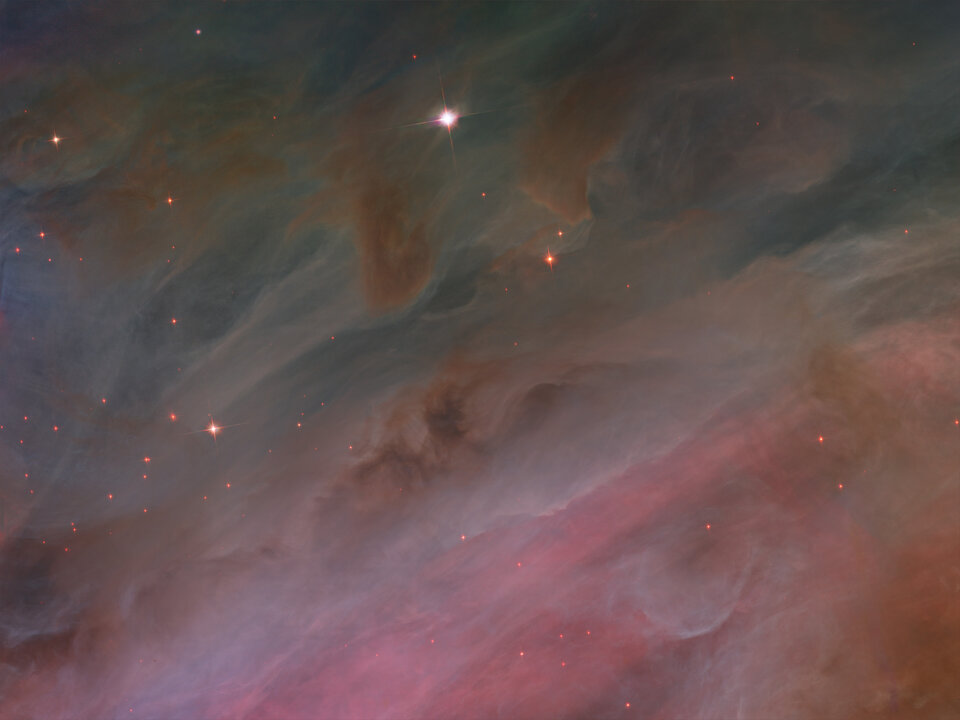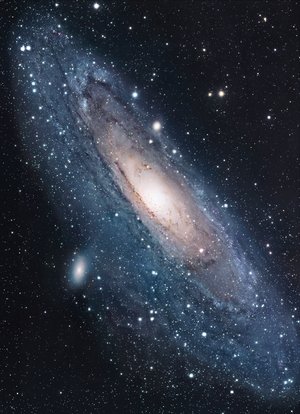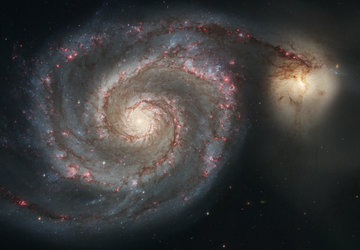Hubble panoramic view of Orion Nebula
In one of the most detailed astronomical images ever produced, the NASA/ESA Hubble Space Telescope is offering an unprecedented look at the Orion Nebula.
This turbulent star-formation region is one of astronomy's most dramatic and photogenic celestial objects. The new picture reveals large-scale structures never seen before - showing a tapestry of star formation, from the dense pillars of gas and dust that may be the homes of fledgling stars to the hot, young, massive stars that have emerged from their gas-and-dust cocoons and are shaping the nebula with their powerful ultraviolet light.

In this mosaic containing a 1000 million pixels, Hubble's Advanced Camera for Surveys (ACS) uncovered 3000 stars of various sizes. Some of them have never been spied in visible light. Some are merely 1/100 the brightness of stars seen previously in the nebula.
Among the stars Hubble spotted are possible young brown dwarves, the first time these objects have been seen in the Orion Nebula in visible light. Brown dwarves are 'failed' stars. These cool objects are too small to be ordinary stars because they cannot sustain nuclear fusion in their cores the way our Sun does.
The Hubble Space Telescope also spied for the first time a small population of possible binary brown dwarfs – two brown dwarves orbiting each other. Comparing the characteristics of newborn stars and brown dwarves in their initial environment provides unique information about how they form.

"The wealth of information in this Hubble survey, including seeing stars of all sizes in one dense place, provides an extraordinary opportunity to study star formation," said Massimo Robberto of the European Space Agency and the Space Telescope Science Institute in Baltimore, USA, and leader of the observations.
"Our goal is to calculate the masses and ages for these young stars so that we can map their history and get a general census of the star formation in that region. We can then sort the stars by mass and age and look for trends."
The Orion Nebula is a perfect laboratory to study how stars are born because it is 1500 light-years away, a relatively short distance within our 100 000 light-year wide galaxy. Astronomers have a clear view into this crowded stellar maternity ward because massive stars in the centre of the nebula have blown out most of the dust and gas in which they formed, carving a cavity in the dark cloud.

"In this bowl of stars we see the entire star formation history of Orion printed into the features of the nebula: arcs, blobs, pillars, and rings of dust that resemble cigar smoke," Robberto said.
"Each one tells a story of stellar winds from young stars that impact the stellar environment and the material ejected from other stars. This is a typical star-forming environment. Our Sun was born 4500 million years ago probably in a cloud like this one."
This extensive study took 105 Hubble orbits to complete (each orbit takes 96 minutes). All imaging instruments aboard the telescope – the ACS, Wide Field and Planetary Camera 2, and Near Infrared Camera and Multi-Object Spectrometer – were used simultaneously to study the nebula.
Note to editors:
The Hubble Space Telescope is a project of international co-operation between ESA and NASA.
For more information:
Massimo Robberto
ESA/Space Telescope Science Institute, Baltimore, USA
Tel: +1 410 338 4382
E-mail: robberto @ stsci.edu
Martino Romaniello
European Southern Observatory, Garching, Germany
Tel: +49 89 3200 6565
Mobile: +49 160 9590 7060
E-mail: mromanie @ eso.org
C. Robert O'Dell
Vanderbilt University, Nashville, USA
Tel: +1 615 343 1779
Lars Lindberg Christensen
Hubble/ESA, Garching, Germany
Tel: +49 89 3200 6306
Mobile: +49 173 3872 621
E-mail: lars @ eso.org
Donna Weaver
Space Telescope Science Institute, Baltimore, USA
Tel: +1 410 338 4493
E-mail: dweaver @ stsci.edu















 Germany
Germany
 Austria
Austria
 Belgium
Belgium
 Denmark
Denmark
 Spain
Spain
 Estonia
Estonia
 Finland
Finland
 France
France
 Greece
Greece
 Hungary
Hungary
 Ireland
Ireland
 Italy
Italy
 Luxembourg
Luxembourg
 Norway
Norway
 The Netherlands
The Netherlands
 Poland
Poland
 Portugal
Portugal
 Czechia
Czechia
 Romania
Romania
 United Kingdom
United Kingdom
 Slovenia
Slovenia
 Sweden
Sweden
 Switzerland
Switzerland


































